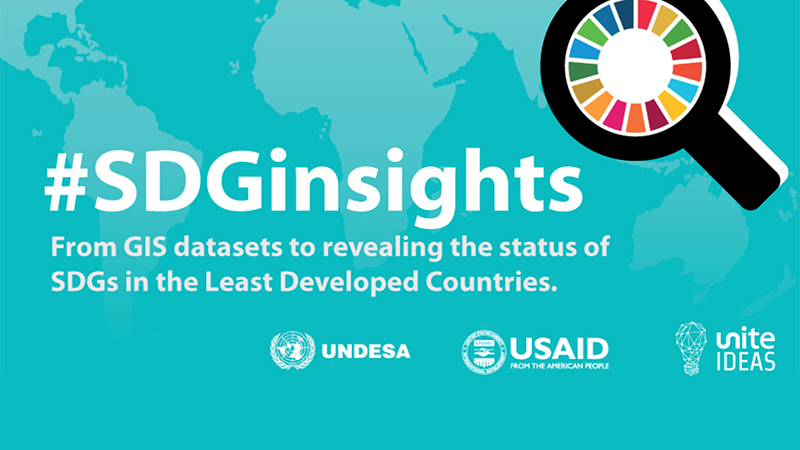
The international community has embarked on a 15-year-long journey to achieve an ambitious agenda aimed at eliminating poverty, fighting climate change and making this world a prosperous place for everyone, leaving no one behind.
To help visualize the progress we are making in realizing this agenda and its 17 transformative Sustainable Development Goals (SDGs), Unite Ideas, UN DESA’s Development Policy and Analysis Division (DPAD) and Demographic and Health Surveys (DHS) has recently launched the #SDGinsights Challenge for researchers and programmers.
The challenge asks participants to combine demographic and health survey data with other georeferenced datasets in an innovative way that will lead to useful insights on the advancement of the goals, especially in field surrounding health and family related indicators.
Seeking submissions by 26 September 2017, the challenge was launched to meet the need for an improved understanding of basic socio-economic conditions and how they are affected by policy, using data visualization to accomplish this.
Today, basic information on population size, poverty, hunger, education, and risk factors which could help identify vulnerable groups, are still mostly aggregated approximations, often at the national level. We know little about poor countries and even less about people living in poverty in these countries.
Fortunately, new datasets are being released which can improve our understanding of what it will take to meet our development challenges. But they are often used in a limited way and there is little understanding of how data captured by weather satellites, for example, can help to understand the economic vulnerability of a population group.
As more data becomes available daily, we need to improve our ability to make better use of this trove of information to support evidence-based policy insights and action.
Many of the data that now exists share one thing in common: they are associated with a specific location or region. Geographically referenced data provides us with a common key with which to join information from many fields and to better understand how the human, social, political, and environmental dimensions interact.
For example, there are already well developed techniques to estimate income poverty in a region by satellite measures of the amount of light emanating from it. Normally, such estimates require costly and time consuming detailed household surveys and even then, they are only useful for large geographic regions. Imagine what else may be possible once creative and clever researches have access to the vast amounts of data from many different fields? What policy options can be discovered as we pursue the 2030 Agenda?
Are you one of these researchers or programmers? Then join the challenge and submit your ideas here by 26 September 2017.
For more information, please visit: https://sdginsights.uniteideas.spigit.com/Page/Home
Source: UN DESA
 Welcome to the United Nations
Welcome to the United Nations